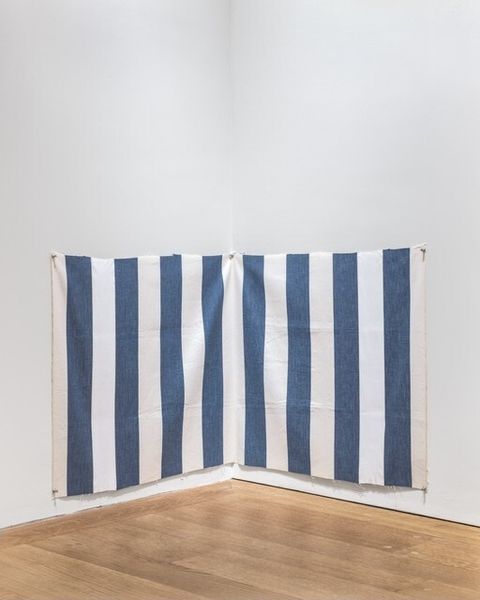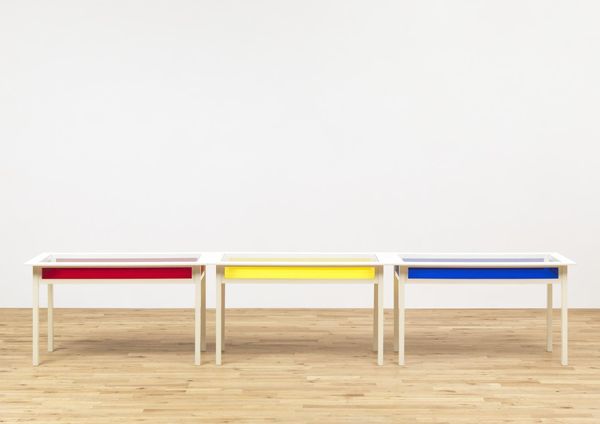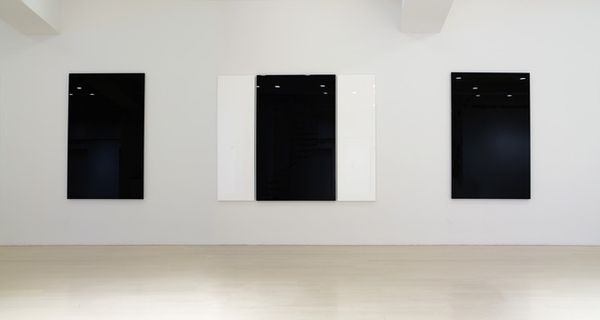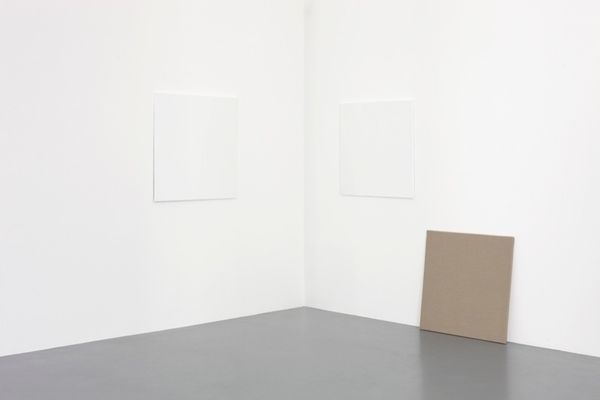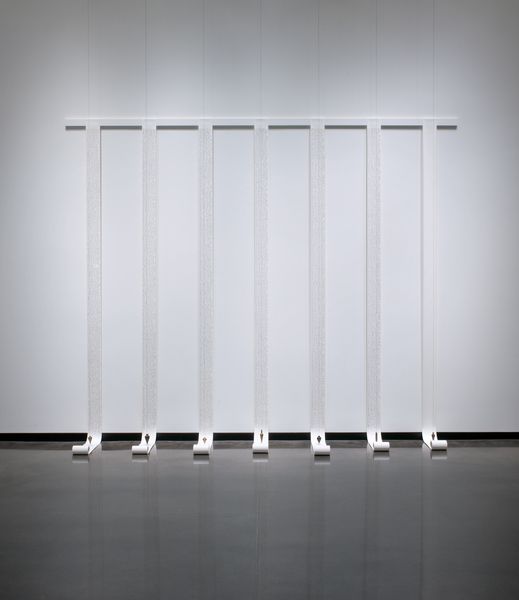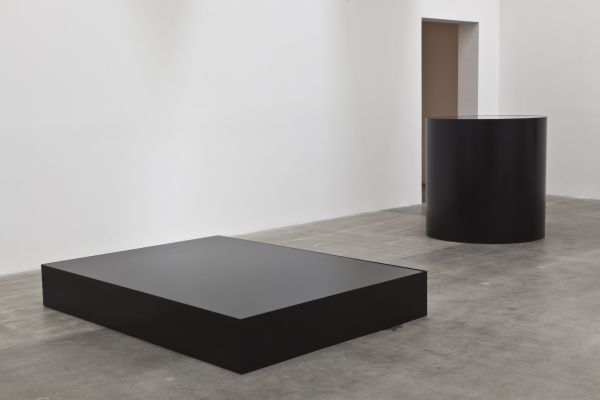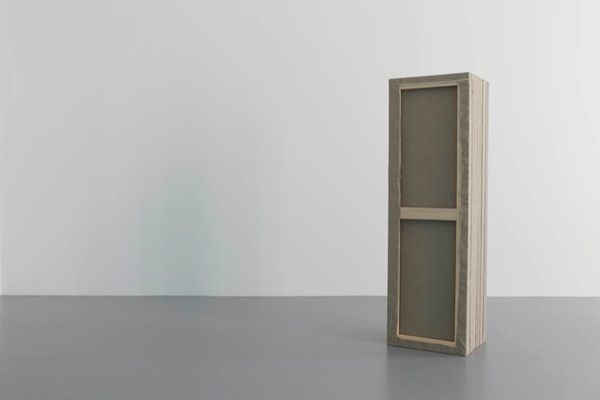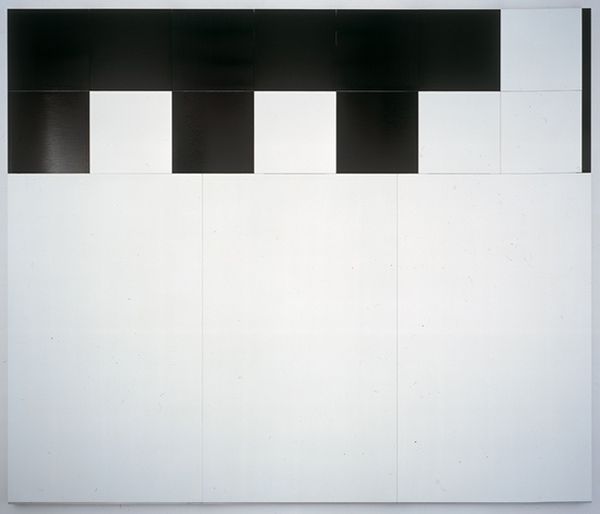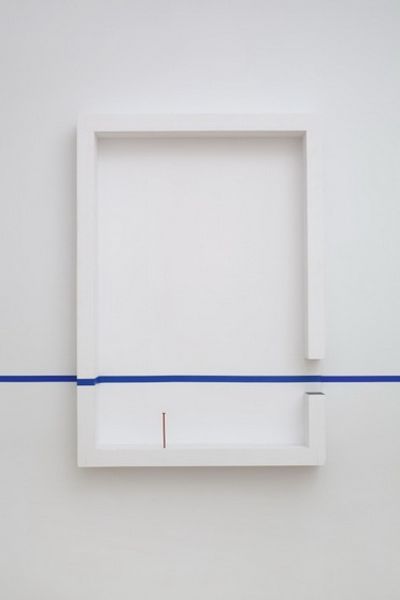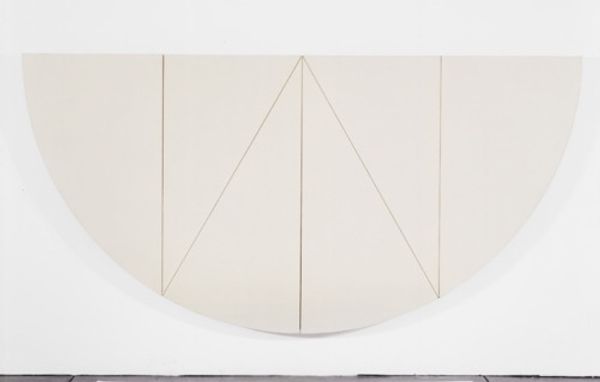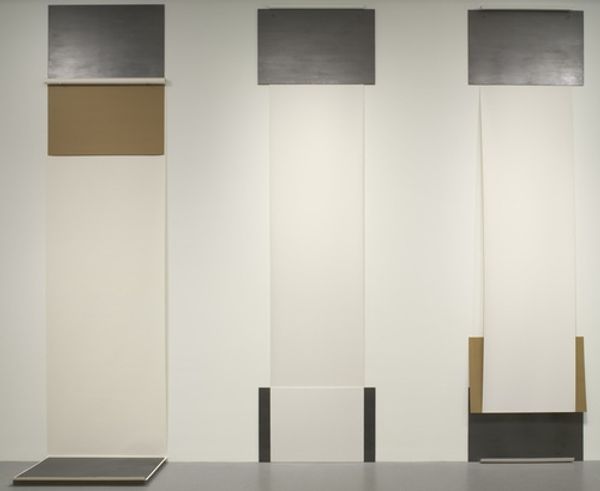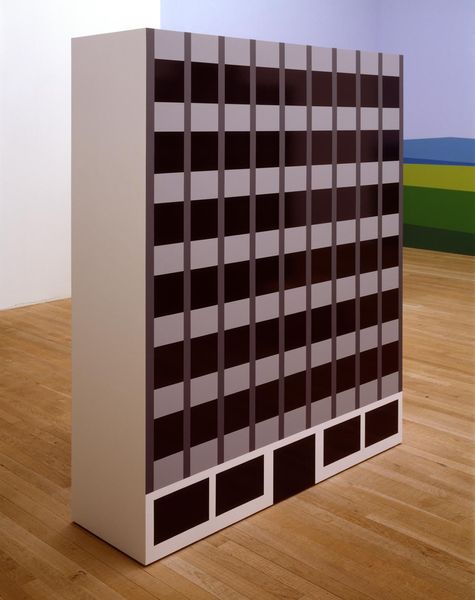
Dimensions: object: 1850 x 6370 x 660 mm
Copyright: © John Latham Estate, courtesy Lisson Gallery, London | CC-BY-NC-ND 4.0 DEED, Photo: Tate
Curator: John Latham’s "Time Base Roller," part of the Tate collection, feels strikingly minimal yet… somehow also burdened. It's immense, isn't it? Editor: It’s… unsettling. The stark black and white stripes in the center clash violently with the muted tones around them. Like a film reel trying to escape its projector. Curator: The piece definitely evokes a sense of cinematic process. Latham, born in 1921 and passing in 2006, really challenged conventional notions of art, incorporating scientific concepts into his work. Editor: I see that! The grid on the rollers makes me think of timelines, or maybe data sets. It almost feels like a clock, each element marking a specific moment. Curator: Exactly! His work often explores how we perceive and structure time. This piece invites questions about duration, the layering of experience, and how we give shape to the temporal. Editor: It’s thought-provoking, for sure. The scale overwhelms, almost demanding you consider your own fleeting existence in its presence. Curator: Agreed. It is an imposing piece that encourages us to reflect on our subjective experience and history. Editor: Definitely an artwork that resonates long after you look away.
Comments
tate 7 months ago
⋮
http://www.tate.org.uk/art/artworks/latham-time-base-roller-t11975
Join the conversation
Join millions of artists and users on Artera today and experience the ultimate creative platform.
tate 7 months ago
⋮
Time Base Roller is a sculptural installation expressing the complex concept of ‘time-basis’ Latham formulated in the 1950s and 60s, through which he attempted to reconcile the infinite duration or space of linear time with the brief moment of immediate apprehension. The sculpture consists of a long metal roller wired to a motor and attached to the wall just above eye level on two steel brackets. The roller is covered in red and white striped canvas with the stripes running along its length. Three sections of canvas hang at intervals along the roller: the central canvas has strong, vertical black and white stripes while those on either side are undyed. Latham used a red marker pen to rule vertical lines on the raw canvas and then, using black marker pen, his son stencilled a mixture of real and nonsense words in vertical formation between the lines. For the artist, the text is a children’s code representing the ways children hear and understand words. A three-way wall-mounted switch permits the visitor to cause the canvases alternately to unroll slowly to the floor and roll back up again. As they roll down and up, a narrow strip of letters and lines is visible along the roller. The whole words on the canvases are never visible as the roller is oriented so that the back of the canvas is visible as it unrolls. For the artist this process is analogous to memory – what remains visible in the mind as all other knowledge and events become hidden with the passage of time, like the letters no longer visible on the reverse of the canvas.
